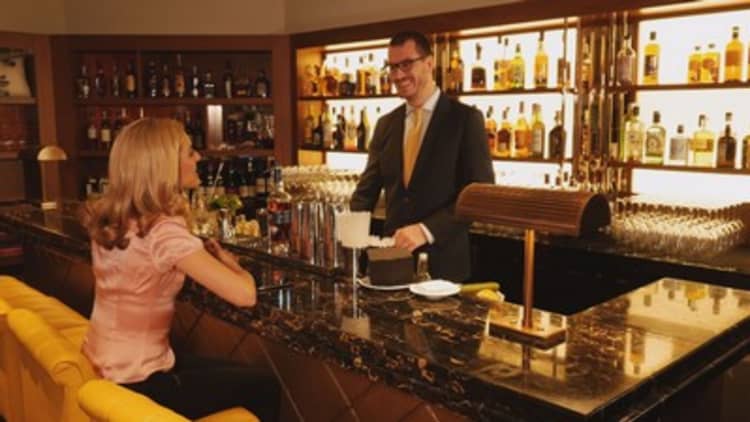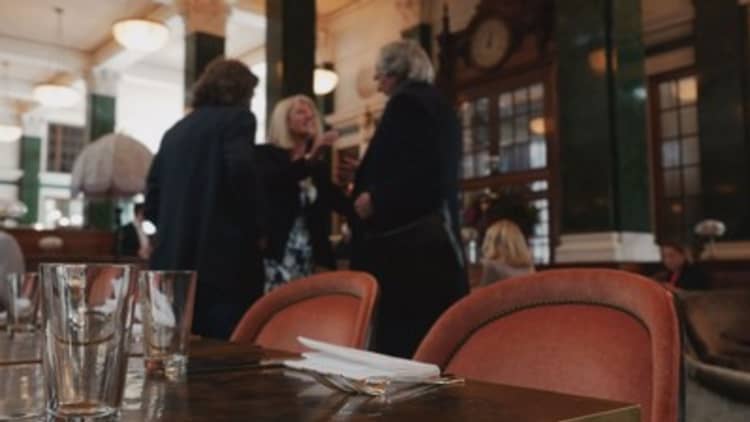
Financiers rushing around the City of London with their eyes glued to screens or noses buried in a newspaper are missing a trick.
The so-called Square Mile harbors many elegant properties boasting stunning aesthetics and captivating histories. Ambitious developers have recently sought to give some of these a new lease of life in the form of private members' clubs.
The first challenge (and potential triumph) in such execution is leveraging the properties' history and features in a way that gels with the provision of the modern conveniences and luxuries that are now often considered necessities by the target consumer base.
The second challenge is convincing a crowd that has traditionally flocked to Mayfair and surrounds in search of this type of social fix that the City of London is now the place to be.

Even entrepreneur Nick Jones, founder of the prestigious Soho House, which has 18 clubs globally and plans for several more to open soon, took some persuasion. Jones claims the landlord of one of his Mayfair venues had to convince him to venture a visit to a vacant City site.
"I was being polite so I came along but as soon as I walked in my jaw dropped and I thought 'My god, this is amazing'," said Jones, referring to the vast entrance hall of his new venture The Ned, launched in conjunction with Andrew Zobler, founder of trendy hotelier the Sydell Group, which counts the NoMad and LINE brands within its stable.
The duo, along with their billionaire backer Ron Burkle whom they credit with their introduction, are betting that the nine restaurants and intimately designed hotel within the former Midland Bank building built by Sir Edwin Lutyens in 1924, will be enough to lure the general public. Meanwhile, they hope would-be members are enticed by areas closed off exclusively for them.
Such areas include the Vault Lounge which features over three thousand original safety deposit boxes along the walls of the 1920s cocktail bar and a rooftop lap pool with panoramic views over the City.
Nearby, Brian Clivaz, another industry veteran with a resumé that includes founding London's Home House and revamping the hotspot Arts' Club, is making a similar bet on an 18th century warehouse that was formerly home to the East India company, a storied English international trading operation founded in 1600.
Indeed, the building and its setting are a large part of the draw for him.
"With a private club you always start with the building and heritage is absolutely essential to it. So anything you can draw out of the building or the surrounding area is very important as that helps you work out the heart of the club and the ethos of the club going forward," Clivaz explained.
Amid its three bars, brasserie and hotel, the Devonshire Club team seeks to incorporate elements from the East India company's traditions, where possible.
"Here they stored silks, tobaccos and ostrich feathers so we have silk cushions, we've got silk curtains, we have tobacco, we sell cigars and we have a nice cigar terrace outside," said Clivaz.
"We also have an ostrich feather lamp so when people look at it they think 'oh my gosh what's that?' - it's a link to the past so I like that sort of touch," he added.
Another industry long-timer, Nigel Stowe, who has taken leading roles at venues including London's Bulgari Hotel and Hotel Café Royal in the past, is now focused on attracting the right crowd to Ten Trinity Square where he oversees operations as general manager.
This collaboration between the Four Seasons hotel chain, Chateau Latour and Thai-Chinese investors Reignwood has seen the luxurious redevelopment of the former Port of London Authority building, a central broking house for the crew of over a thousand ships per day after its construction in the 1920s.
Turning the abandoned building into the lavishly designed hotel and club, the latter of which features a Chateau Latour wine tasting room alongside beautifully-appointed eating, drinking and working spaces, has been a significant operation, says Stowe.
"If it had been a new build it probably would have been done two to three years ago. But sympathetically restoring a building and bringing it back to its former glory has been its biggest challenge," he explained.
While ambitious projects unleashed on historic buildings can sometimes raise local ire, the teams at all three venues say that they have enjoyed strong community and stakeholder support for their plans.
"There are so few of these buildings left and I think there's something quite magical about bringing them back to life," Stowe enthused.
"Why would they not want a beautiful building like this up and running again?"



